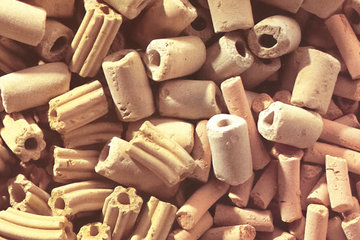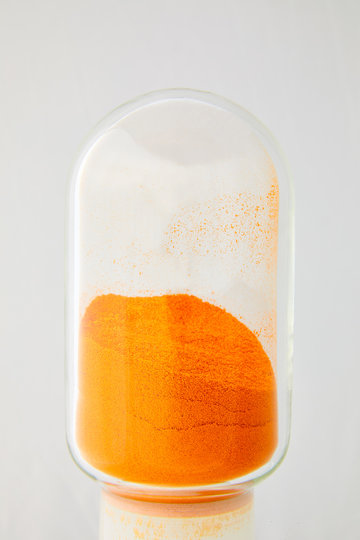Vanadium chemicals
SOMETHING OF QUALITY FROM THE REMAINS
What do ash residue and a pacemaker have in common? A filter cake from the petrochemical sector with a catalyst? Petrochemical residue with brilliant pigments? Vanadium is found in all of these.
As a salt or an oxide – GfE produces high-pure and high-quality vanadium chemicals from environmentally harmful residues.
Since their founding in 1911, GfE has worked with the transition metal vanadium. The optimization of existing methods and the development of new technologies allowed high-pure vanadium compounds for various industries to be extracted from industrial slag and residues. Furthermore, existing products are enhanced and given specific modifications for customer requirements. Vanadium chemicals have been their own business division since 2014.
Pure product from remnants
Made from secondary raw materials: to do this, several thousand tons per year of filter cake, ashes, and petrochemical residues from power plants and refineries in the Nuremberg plant undergo a two-stage process: First, the thermal treatment is conducted in a short rotary furnace, followed by wet chemical processing. At the end of themulti-stageprocess, high-pure vanadium chemicals emerge in the form of salts, solutions, or oxides. The process continues to be optimized further.
We convert large quantities of environmentally harmful waste into high-quality products.
Special specifications
GfE has always served a niche market; the company manufactures both for small customers according to their specific requirements in the kilogram range, and for major customers by the ton. If a customer needs a special chemical or physical property in the final product that is different from the standard specification, GfE will make it happen and work with them to develop a solution based on their expertise.
Reprocessing residues
The recycling process is easy on the environment and conserves resources at the same time. After the first residue-free melting process, the vanadium is in the form of sodium vanadate. The nickel product that forms as the by-product is passed on to the appropriate industry branch.

Vanadium for catalysts and colored pigments
High-pure vanadium is primarily used for catalysts in the chemical industry. So for example, several million tons of sulfuric acid are produced using vanadium catalysts every year around the world. Power plants, flue gas plants, and the automotive industry likewise use catalysts containing vanadium for denitrifying flue gases. Another buyer of chemicals containing vanadium is the pigment industry: Yellow dyes and paints contain bismuth vanadate, although the brilliant pigment is used in many other shades as well.

Medical technology and more
In addition, there are other areas of application such as medical or energy storage technology, the glass, ceramic, and enamel industries, or the metallurgic industry itself: Batteries in pacemakers and defibrillators contain high-pure vanadium. The vanadium redox battery can store electrochemically energy from alternative sources like solar or wind farms. Because vanadium absorbs UV light, it is melted into the glass of beverage bottles to protect contents that are sensitive to UV rays. Vanadium is used as a replacement for toxic lead in the enamel on aluminum. And vanadium oxide is used in metallurgy for the production of vanadium aluminum alloys.
Further developments
GfE is always facing new challenges for meeting special customer requirements. That is why processes and technologies are continually optimized and further developed in the Vanadium chemicals division. Furthermore, teaching is a concern for the GfE company, as more and more master’s and bachelor’s thesis on related topics are being supervised. It’s exciting for those studying to see the results of their work being applied directly in practice.
